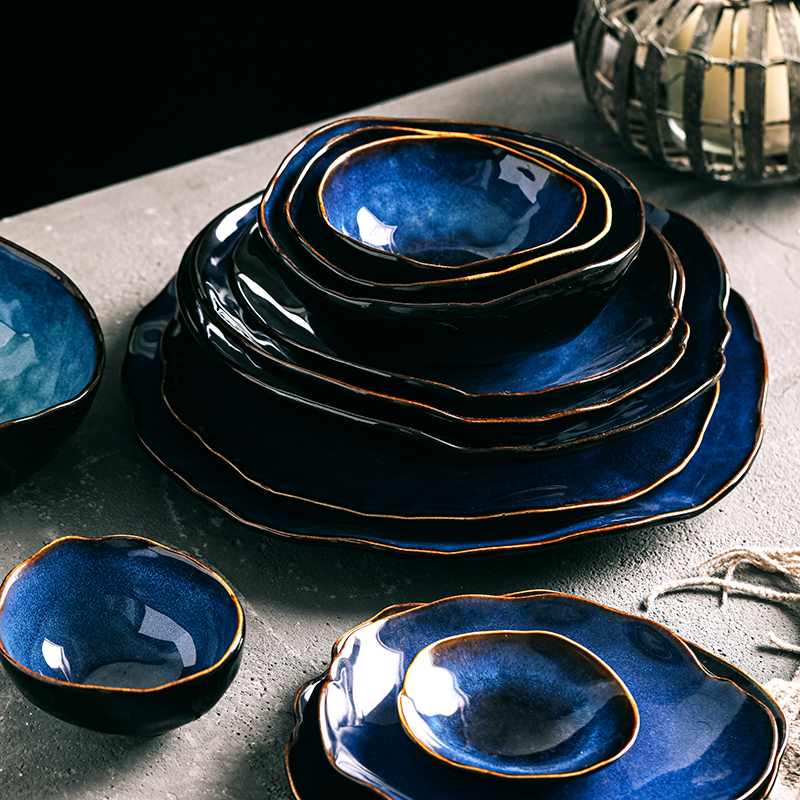What is Color Glazed for Ceramics ?
The Basics of Glaze
While applying glaze to a ceramic piece it not absolutely necessary, it can enhance the fired clay piece both on an aesthetic and functional level.
Many clay bodies are not vitreous without being glazed. Glazes, by their nature, are vitreous. When glaze is fired onto a piece it is like covering the piece with glass. It seals the piece making it stain resistant and, depending on the glaze, food safe.
Glazes come in literally thousands of combinations of colors, textures, styles and types that can be applied in many different ways and fired at a range of temperatures. Glazes are sometimes the most exciting part of ceramics. This is partly because the transformation of the piece when it is fired can be quite pronounced. This is why it is often described as “the magic” in ceramics.
Most raw glazes do not look like what they will look like after they are fired. The heat of the kiln causes a chemical reaction in the glazes that alters their appearance. In glass they call this striking. If you have ever seen copper roofs turn green, the process is similar. The same glaze can also turn different colors when fired to different temperatures. Some glazes that can be fired to a wide range of temperatures will have one appearance at Cone 06 and a completely different look at cone 6. Have fun and explore the possibilities.
The description of a glaze surface properties falls into many names and categories with an infinite number of variables in-between. Here are the basic names you should learn to recognize. Transparent, Opaque, Gloss, Matte, Breaking, Flowing, and then there are the limitless color names added to these descriptive surface names. So a very descriptive name of a glaze could be Glossy Opaque Canary Yellow cone 05. The cone describing it’s firing range.
Transparent is a description of whether you can see trough the glaze to the clay body underneath. All clear transparent glazes darken the color or the clay or underglaze they are placed upon. Colored transparent glazes will darken the clay body and will often darken and muddy the color of an underglaze that is placed underneath them.
Opaque describes a glaze that cannot be seen through, thus covering the surface and color of the clay.
Glossy refers to a glaze surface that is shiny and reflects light.
Matte describes a surface that has no shine and absorbs light with no reflection.
So now we come to all the variables and combination names.
Semi Transparent is a glaze that has partial transparency just as Semi opaque means it will not completely block out what is beneath it.
Semi- Gloss means the glaze is somewhat shiny but not total reflective just as semi matte refers to the surface being somewhat dull but has a bit of shine. Then there are similar names such as Satin Matte.
The example Glossy Opaque Canary Yellow would describe a bright yellow shiny glaze that you cannot see through that a is recommended to be fired to cones 05.
Here are some further descriptions on how glazes react and move when fired.
A Breaking glaze is a reference to a glaze that will change color and sometimes transparency as it thins or thickens on a raised or recessed area during the firing.
A Flowing glazes means that it moves when fired and will bleed ( move ) into a glaze place next to it. A Stiff glaze stays put and does not move much from where it is applied when fired.Read the glaze label. It will tell give you information on the glazes concerning recommended firing temperature and application, and whether the glaze is non-toxic or cautions about its contents. Remember the non toxic and caution information refers to the contents of the glaze jar in it’s present liquid or dry form and is not an indication if the glaze is dinner ware safe. That should be listed separately on the jar.
Every manufacture of glazes creates their own codes and descriptions of their glazes that can mirror the names we have discussed or be different to set them apart from other manufacturers. Glazes can be categorized by their firing temperature, surface qualities, names and numbers. Don’t forget many will also have upc Bar codes and production dates so they can be tracked in sales and re-ordering. You should always run a test on glazes you have not used previously.
 Japanese Style Sake Cup Sets with Pot
Japanese Style Sake Cup Sets with Pot
 Home Living for Ceramic Dinnerware Sets and Mugs
Home Living for Ceramic Dinnerware Sets and Mugs
 Colorful Laser Engraving Logos
Colorful Laser Engraving Logos

